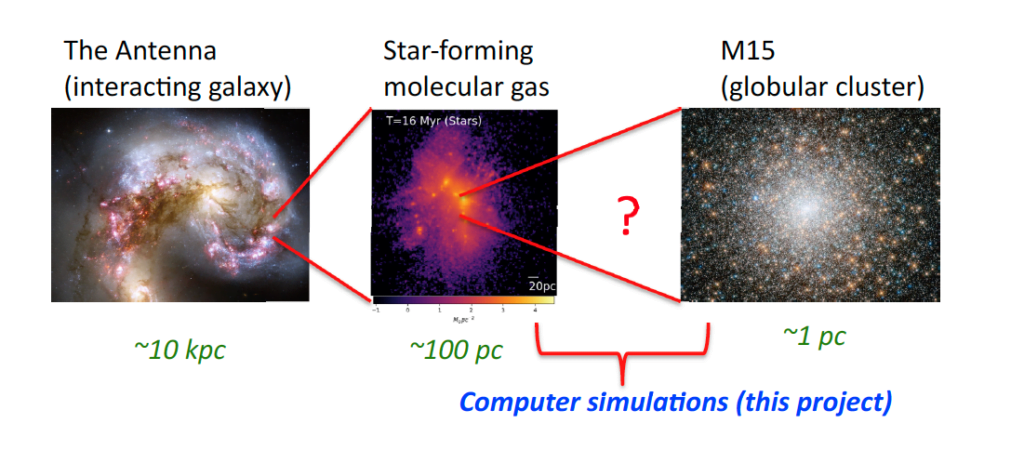Project area/S
- The Local Universe
- The Distant Universe
Project Details
The Galaxy is currently forming just one star a year. However, the Galaxy is not forming a massive star cluster (known as “globular cluster’’; GC) consisting of 10^6 stars – a long-standing mystery. The formation sites of such GCs candidates are found to be interacting galaxies. In this project, summer students will try to discuss why such massive GCs can be formed preferentially in interacting galaxies based on the results of computer simulations of GC formation. Firstly, students numerically investigate the possible formation sites of massive molecular clouds from where GCs can be formed. Then, students investigate how a huge number of stars can form from massive molecular clouds. Structure, kinematics, and chemical abundances of the simulated star clusters will be analyzed in detail. Comparison with observations will be briefly made.
Student Attributes
Academic Background
Basic knowledge of astronomy and physics. Some skills to use software for data analysis.
Computing Skills
This is not essential, but, if students are familiar with any programming with python (or any languages, e.g., C), it would be great.
Training Requirement
Basic physical processes of galaxy formation and evolution will be learned by students. Data analysis skills of astrophysical simulations will be learned too.
Project Timeline
- Week 1 Inductions and project introduction
- Week 2 Initial Presentation
- Week 3 Basic analytical work on the formation of molecular clouds in galaxies
- Week 4-6 Performance of computer simulations of interacting galaxies
- Week 7 Data analysis of simulation data (structures and kinematics of simulated star clusters)
- Week 8 The same as Week 7 but for analysis of chemical abundances of star clusters
- Week 9 Final Presentation
- Week 10 Final Report
